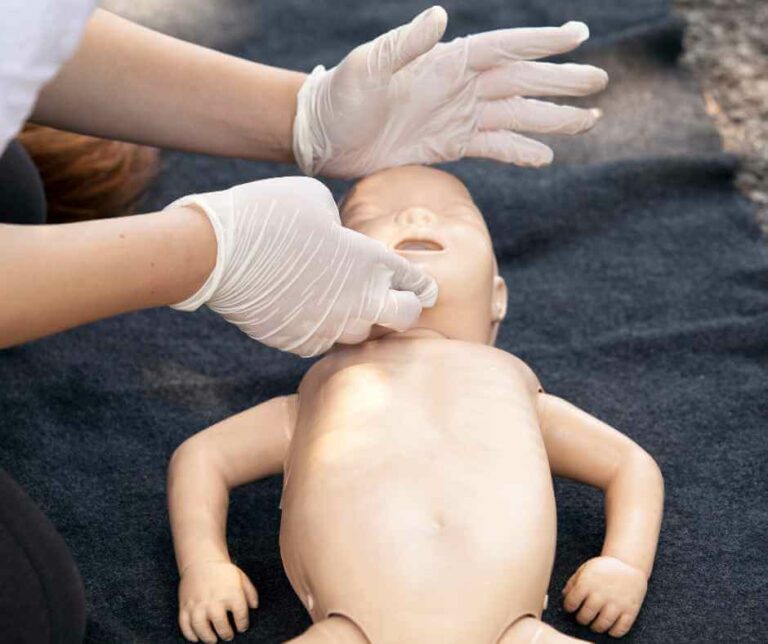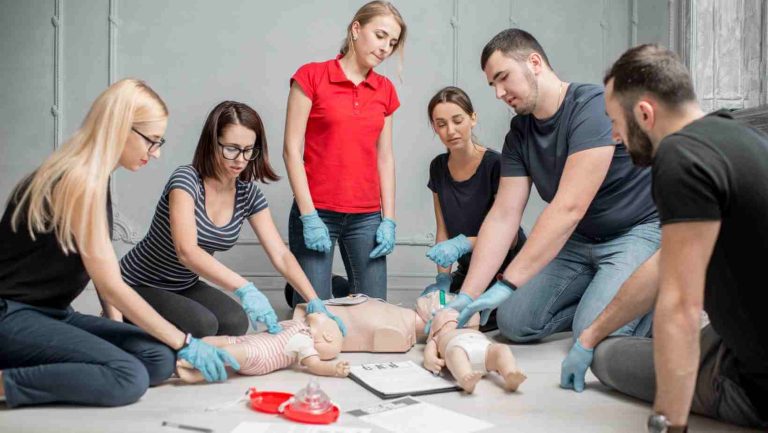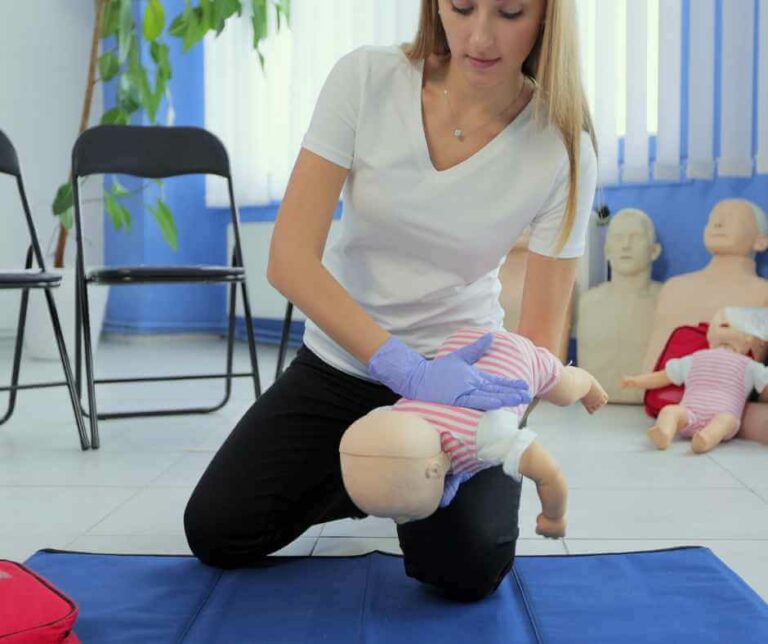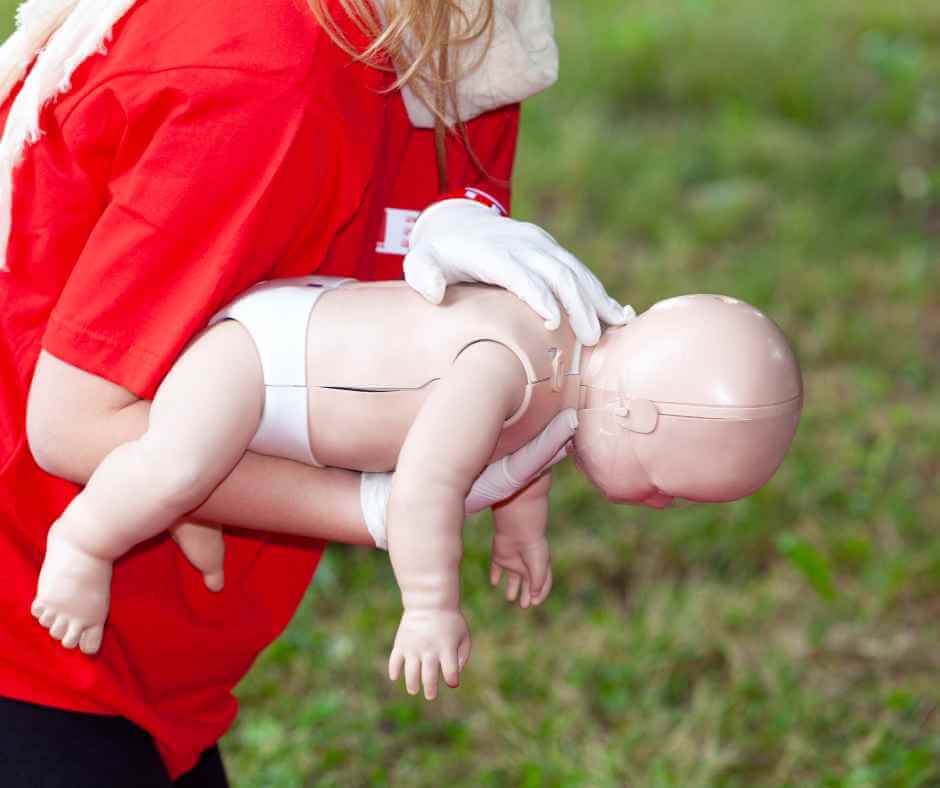The Benefits of Doing a Baby CPR Course

Babies are not as fragile as we believe them to be. They are born with many natural survival instincts such as the gag reflex, the diving reflex and the rooting and sucking reflex.
However they are unable to tell us how they feel, which means that emergency situations with a very young child can be difficult to navigate, especially as a new parent.
Baby CPR
This is where a baby CPR course run by childrens nurse professionals becomes an essential part of your toolkit.
Having your first baby is a life changing experience, but for some it can be full of anxiety and uncertainty.
Antenatal classes teach so much, like how to cope with labour and birth, pain relief options, water birth, the options are endless. You can choose from traditional birthing, hypnobirthing, calmbirth classes, but no one teaches baby and child first aid and CPR in antenatal classes
The following article will highlight the differences in emergency response and recognition of an illness that we might see in children and babies.

Recognising an allergic reaction in baby
Here are two examples of allergic reactions that I have seen:
- A 5 year old eats scrambled egg. They get a red bumpy rash around their neck and upper body, lip swelling and a swollen right eye. No other symptoms, no breathing difficulties. They took an antihistamine tablet and recovered well after 30 minutes. Although it takes the swollen eye a lot longer to recover. Once fluid builds up around the eye socket, anti histamine will not reduce this fluid. It will reduce the itch, but the fluid will just reduce on its own.
- An 11-month-old baby eats a green bean for the first time. 30 minutes later, the baby becomes a bit irritable. It is early evening, and the baby becomes sleepy.
As you can see, these reaction were both completely different but caused by the same thing – food. Sometimes an allergic reaction can be triggered by the most unlikely foods.
Babies and young children are not able to tell us when they are feeling ill or out of sorts, so when their blood pressure drops, and they start to feel dizzy, they may just appear to be irritable, and worst case scenario they become pale and floppy. If this is near nap time or bedtime, the symptoms may not be obvious to the untrained eye, but learnable with a reputable baby first aid course.
Baby Shark CPR
Fun fact, the tune of Baby Shark is exactly the right tempo to be able to effectively perform CPR. Try it yourself and practice your own Baby Shark CPR!
When a small child chokes, they may choke silently.
The gag reflex is something that small babies are born with. The gag is triggered when food or foreign objects touch the back of the roof of the mouth. The soft palate contracts and pushes the food or object forward so clear the airway.
Gagging is different to choking, but it can be hard to identify the differences if you are not familiar with them.
Gagging:
- The child may have watery eyes
- They will momentarily have their mouth wide open
- They may make gagging noises
- They thrust their tongue forward
- Sputtering and a normal productive cough
- They may seem frustrated
- They may vomit
- Face will be red or very pink
- Overall gagging is normally quite short lived, a few seconds.
- The overarching advice with gagging is Do Not Interfere.
Choking:
- They colour may be pale, purple or blue tinged
- they be making a noise when they breath/wheeze
- They may have a weak cough
- They may be unable to make any noise
- they may look wide eyed & panicked
- Staring and open mouthed for longer
- May wave arms or grab at throat
- Gasping for breath
Any reputable baby first aid courses will teach you the difference between gagging and choking, and how to help a choking child. When this first aid situation arises, you don’t have much time to respond.

We recognise that there is not always an emergency situation with your child, but everyday medical issues may still crop up from time to time. This is why we go over childhood fevers, and when to seek help.
Fever is so misunderstood. It is actually our childs early warning system, and tells us when our child has some sort of virus or bacteria. Often parents have a lot of fear around the fever this causes, but we love to teach our parents that fever is our friend.
A childs fever will not just shoot up and damage the child in any way. The worst case scenario is a febrile convulsion. This can be traumatising for the parent and child, but the good news is that there is no documented evidence of a child coming to any harm with a febrile convulsion, despite them being awful to experience. We cover these in all of our classes as 1 in 30 children are affected by febrile convulsions and they can often happen out of nowhere, before the parent even knows that the child is sick.

Performing baby CPR is possibly one of the worst scenarios imaginable, we don’t want you to ever have to do it, but we also know that the situation could arise suddenly. Babies are more likely to have respiratory arrest than a cardiac arrest, but in our baby first aid course we teach the national guidelines, which are that if your baby or child stops breathing, you start CPR.
Learning a proper baby CPR and child CPR technique is essential and is taught by most reputable baby first aid courses.
Want more? We’ve got you covered…
Our Baby First Aid Courses
Our baby first aid courses are available in person in your home and online. We run classes in your home with groups of 2, 4 or up to 10 in Sydney & Melbourne and you can book in 3 easy steps!
- Pick your class
- Follow the prompts to purchase
- We will contact you within 24 hours to lock in your date of choice
Our First Aid Certificate Courses
We run most of the popular first aid courses Australia wide. HLTAID011 Provide First Aid, HLTAID009 Provide CPR, HLTAID012 Provide First Aid in an Education & Care Setting, RAMOAP (anaphylaxis), Mental Health first aid and CPR/LVR to name a few.
Book your public spot online or contact us if you have a group of 5+ people for onsite training.
Here are some other resources you may enjoy!
FREE GUIDE: Your Virtual Baby First Aid Kit
FREE GUIDE: Introducing Common Allergy Foods & Allergic Reactions
FREE Workplace Emergency Preparedness Plan: Grab this at the bottom of every page!
Follow for baby & child first aid and allergy info and tips on Instagram, TikTok & Facebook all @thenestcpr
